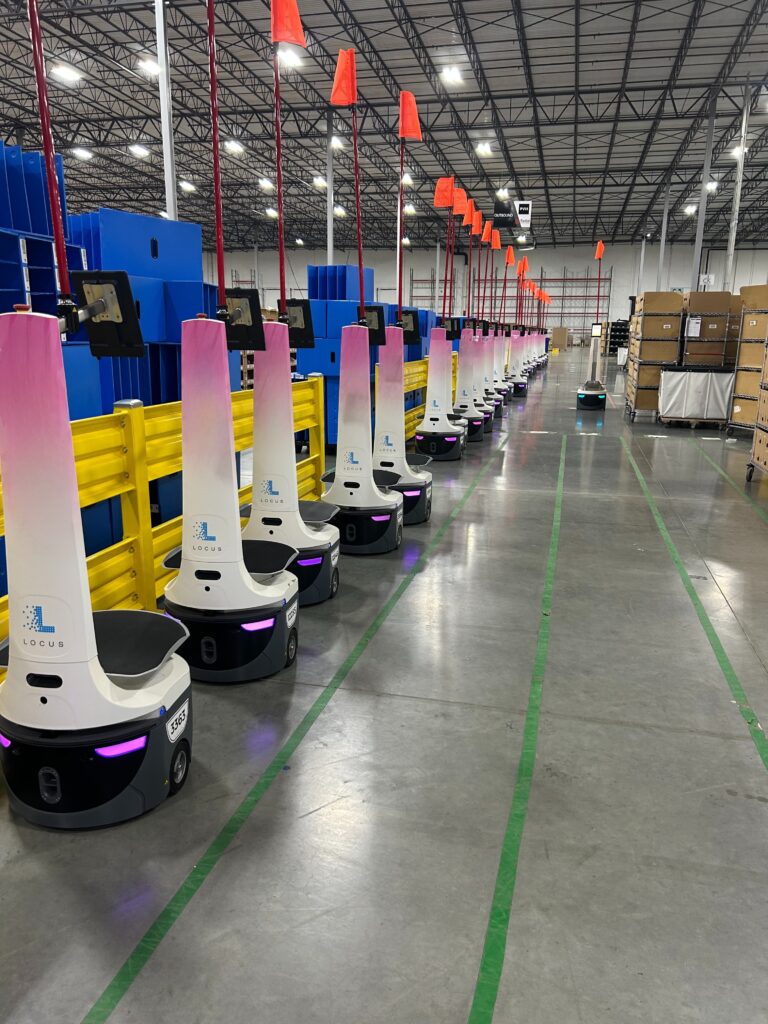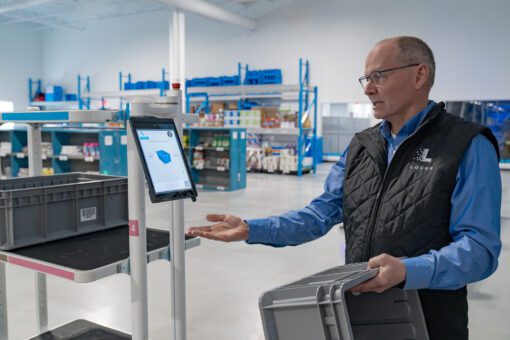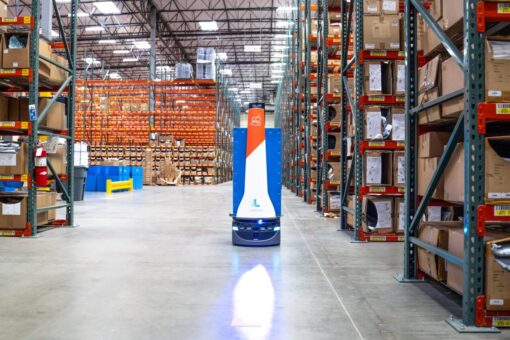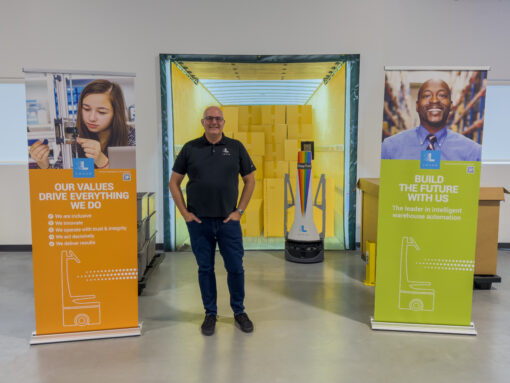WP: How to achieve 400 UPH with Locus Fast Pick
WP: How to achieve 400 UPH with Locus Fast Pick Download Now!
How to Scale Warehouse Automation Across Sites: A Playbook from Radial
Mary Hart, Sr. Content Marketing Manager

Scaling automation across a warehouse network requires thoughtful design, workforce alignment, and a repeatable framework that balances consistency with flexibility.
That’s the approach Radial has taken, and as a global 3PL serving leading retail brands, they have now completed multiple implementations of Locus Robotics. Each site implementation is built on the lessons of the last, creating a warehouse playbook that other fulfillment leaders can use to expand automation without losing sight of quality and workforce adoption.
On an episode of the “Warehouse Automation Matters” podcast, David Welsh, VP of Fulfillment Services Delivery at Radial, walked through what it takes to get warehouse automation right the first time and how to scale it the second and third time.
Start with Warehouse Pick Quality, Then Layer on Speed
When Radial first explored automation, the company wasn’t chasing throughput numbers. Instead, it focused on improving pick quality and order visibility. “First-pass quality through the door on your first attempt is key for us,” Welsh said.
That emphasis on order accuracy and service consistency became the foundation for everything else. Once quality was in place, Radial turned to improving speed and scaling capacity.
Your Move:
- Prioritize quality metrics (pick accuracy, error rates, first-pass success) as automation’s first win.
- Treat service consistency as a differentiator for your customers.
- Use those gains as the launchpad for higher warehouse throughput and scalability.
Simplify Training and Onboarding
Training was one of Radial’s most immediate wins. With traditional methods, it could take weeks for new hires to meet productivity expectations, but with Locus, training was reduced to hours instead of days thanks to an intuitive interface.
“The graphical user interface is very intuitive and easy to use,” Welsh noted. “We were down to minutes and hours to train and onboard associates effectively.”
This usability not only shortened the ramp but also boosted workforce confidence and buy-in.
Your Move:
- Measure training time as a key performance indicator (KPI) for warehouse automation.
- Evaluate technology from the perspective of frontline associates and not just management.
- Incorporate multi-language features where available to support a diverse workforce.
Build for Multifunctional Workflows
Radial’s second implementation didn’t stop at outbound and inbound. It added replenishment and returns putaway, allowing warehouse operators to shift roles seamlessly. Associates became zone managers to oversee multiple functions within a single workflow.
The impact was twofold and resulted in higher efficiency and greater employee satisfaction. Workers weren’t limited to repetitive single tasks; instead, they managed broader responsibilities with automation as their support system.
Your Move:
- Map workflows across inbound, outbound, replenishment, and returns to identify where automation can integrate.
- Crosstrain associates so they can oversee multiple processes.
- Use automation to elevate roles and give staff more oversight and decision-making authority.
Plan Labor and Machine Uptime Together
Welsh highlighted one of the most overlooked elements of scaling automation, which is aligning labor planning with machine utilization.
“Units per labor hour isn’t the same as a unit per machine hour,” he said. “Your robot utilization is key.”
Failing to balance these two metrics can result in bottlenecks, wasted resources, or underutilized robots. By incorporating machine uptime into labor plans, Radial ensured its investments delivered maximum value.
Your Move:
- Include machine utilization metrics in labor planning models.
- Run post-event reviews after peak or rollout to capture lessons learned.
- Adjust labor schedules dynamically as automation scales across functions.
Make Collaboration a Priority
Successful automation is never a solo effort, and Radial’s implementations required close coordination between internal project managers, Locus Robotics, and other technology partners.
“Those relationships, those moments of engagement and collaboration are really what make us successful,” Welsh explained. From shifting waypoints to optimizing induction points, adjustments were made together, not in silos.
Your Move:
- Establish joint governance between your operations team and technology partners.
- Create space for continuous recalibration, not just one-time rollout.
- Treat implementation as an ongoing journey, not a project that ends at go-live.
Engage and Motivate the Workforce
Technology succeeds only when the people using it embrace it. At Radial’s Brownsburg, Indiana site, where many associates are Haitian Creole speakers, Locus’s multi-language profiles were a breakthrough.
“It seems to be unlocking some potential that was always there in our workforce,” Welsh said. Engagement increased, and warehouse associates felt the system was tailored to their needs.
Gamification also played a role as dashboards and reporting gave workers visibility into their own productivity and quality levels along with benchmarks against peers. Daily and weekly boards, combined with recognition programs, reinforced pride and accountability.
Your Move:
- Customize warehouse automation to meet workforce needs, including language preferences.
- Use dashboards and gamification to give workers visibility into their performance.
- Build recognition programs around quality and productivity improvements.
Scale with Flexibility
Looking ahead, Radial is rolling out automation in cosmetics and beauty fulfillment. This vertical presents smaller form factors and micro-peak fluctuations, but the same pillars of quality, service, and training apply.
By tailoring automation to each product type while replicating its foundational model, Radial has created a scalable framework.
Your Move:
- Identify which pillars of automation can be standardized across sites (training, quality, onboarding).
- Tailor other elements (form factor, workflows, peak handling) to the vertical.
- Use lessons from one site to inform and accelerate the next.
The Takeaway
Radial’s journey shows that scaling automation isn’t about buying more robots. It’s about building a playbook that combines quality, workforce adoption, labor planning, and collaboration into a repeatable model.
By focusing on these principles, fulfillment leaders can expand automation in a way that not only meets customer expectations but also empowers the workforce behind the technology.




